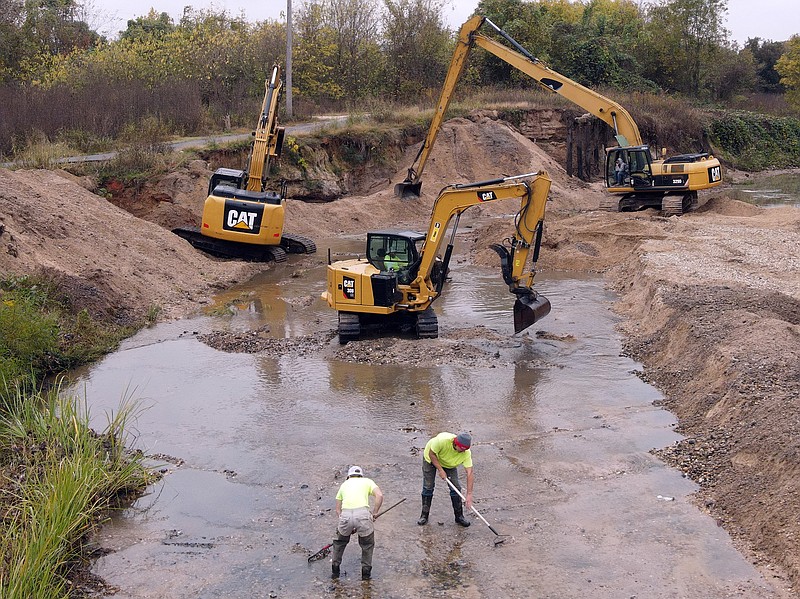TEXARKANA, Ark. -- Work to stop bank erosion and clear sediment deposits in Nix Creek began this week, and the city anticipates its completion by the end of the year.
An engineering study approved and funded by the city Board of Directors identified erosion and sediment as the most pressing problems with the creek.
"The sediment deposits decrease creek capacity and alter the path of the creek which can cause further erosion," according to city officials. "The highest concentration of bank erosion has been around Ed Worrell Park which has resulted in a loss of about 10 feet of the East bank. Bank erosion creates steep unstable slopes which makes the erosion exponentially worse."
In September, the Board voted unanimously to award a contract worth almost $648,000 to Kesser International of Little Rock to do the work.
The project will address an estimated 20% of the work needed to keep water flowing through the creek bed, and it will have very little effect on potential flooding of the kind seen by residents during heavy rain the last couple of years, Public Works Director Tyler Richards said at the time of the vote.
The work will affect flooding "a very small bit," he said. "It's not going to be a noticeable difference. It is not going to decrease the floodplain whatsoever. Those areas that are in floodplain, they're still going to flood. There's nothing that we can do to stop that. We are simply removing these large sediment deposits, trying to stabilize those banks."
Water finds its way around sediment deposits caused by bank erosion, so they do not decrease the creek's capacity enough to cause flooding, he said. Instead, the problem has been too much rain.
"We have just been extremely unfortunate in the last couple of years with some heavy, heavy rains. We had a 100-year storm last year, and this year we had a 50. That's pretty much unheard of," he said.
The ideal solution to the flooding problem is construction of water detention basins that would temporarily hold storm water, preventing it from causing damage, but such projects require extensive excavation and cost $500,000 to $1 million each, Richards said.
"It would be better to address some of the tributaries, detention along some of the tributaries going into Nix Creek. I've got several locations where I would like to move detention ponds, and I want to start incorporating some of those projects into our budget. That is truly going to be the only thing that helps any flooding issues," he said.



